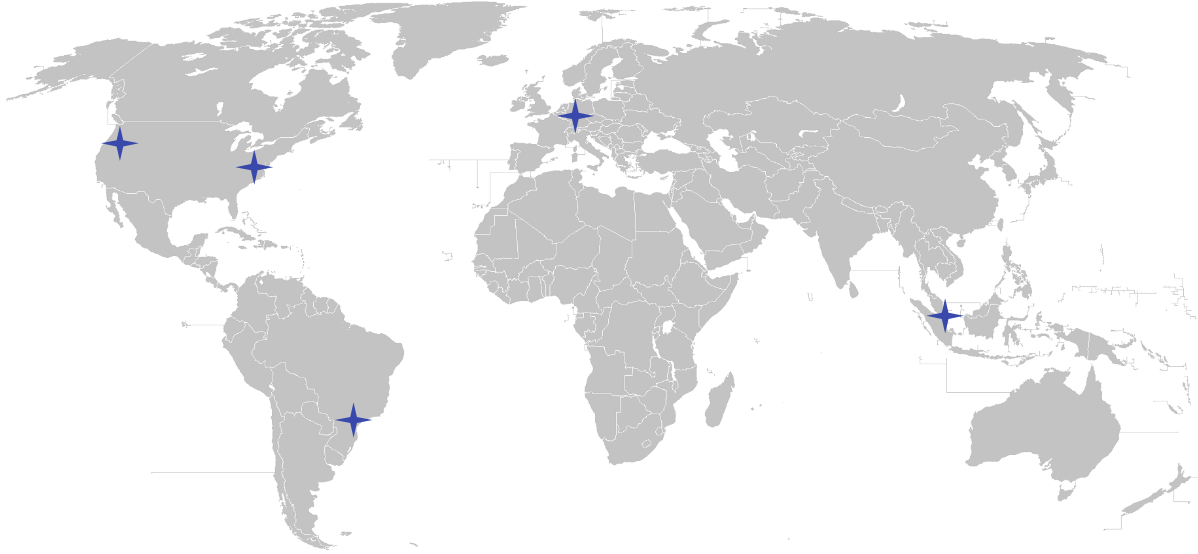Home - Teleport Blog - Low Latency Identity-aware Access Proxy in Multiple Regions - Oct 1, 2021
Low Latency Identity-aware Access Proxy in Multiple Regions

Latency problem
A multi-protocol access proxy is a powerful concept for securing access to infrastructure. But accessing numerous computing resources distributed across the globe via a single endpoint presents a latency challenge.
Today we are announcing that the hosted edition of Teleport Access Platform is now available in 5 regions all over the world. In this blog post we'll tell you how we've built it and it should be helpful for anyone working on a globally distributed SaaS system if latency is a concern.
A bit of history
When our team set out to build a hosted version of Teleport, we had to make trade-offs to launch a production-grade product quickly. One of these trade-offs was to deploy Teleport solely in the US West. This allowed us to launch early, work with our earliest customers to understand who they are and where their infrastructure and users are located.
One of the core concepts of the Teleport Access Platform is the identity-aware multi-protocol proxy. After a single login with SSO and MFA, Teleport connects clients to all of their computing resources like SSH servers, Kubernetes clusters, databases, internal web apps running behind NAT, across all cloud providers and even edge locations.
So early feedback we got was that the latency of proxying all traffic through the US West was utterly unusable from many regions. For example, when using SSH, one Teleport user reported more than 1 second delay between a keypress and a character appearing in the terminal.
We set out to solve the latency of using Teleport from around the world.
Scalability and ease of use
As a starting point, we identified a couple of constraints; our earliest adopters were all teams spread around the world. We also wanted to avoid any knobs, configurations that our customers would have to understand and try to understand our product and apply the configuration options we offer to their use case. In essence, ideally, Teleport Cloud would work without the customer having to understand any deployment options.
So we had some tricky challenges to address.
The first challenge was that the self-hosted, downloadable Teleport uses the same code base as Teleport Cloud; it never had any of the required "SaaS machinery" built into it. So we had to test out the code base and figure out how stable Teleport would perform if, for example, we deploy a proxy in Europe with the authentication and database in the US. And test out different scenarios by synthetic tests introducing problems like latency, packet loss, and solving any issues.
Testing went well, and we didn't have to make any significant changes to the networking code, and no additional configuration was needed.
Networking
The second challenge we had to solve was ingress to our cloud network. There are, in general, a couple of different ways to solve this.
First, we could create a separate domain for each region. In this case the users would have to know which endpoint to connect to. Another option was to use a DNS service that supports split-horizon DNS responses, basically a DNS server that changes its response based on a client’s location, which in turn is based on its address.
Both of these options were ruled out. The option of multiple domains was fundamentally incompatible with our vision of Teleport being the simple way to access all of the world’s computing resources. And the split-horizon DNS was not as reliable as we wanted.
Anycast routing and Global Accelerator
So we went with the third option, and we believe, the best option, which is to use Anycast routing and leverage the properties of internet routing to route users on the least expensive path to our service.
If we inject routes in Europe and North America, users should generally route to the closest location. We use AWS to host Teleport Cloud, and AWS' version of Anycast is an offering called Global Accelerator.
And the last piece we needed was to scale our Kubernetes ingress. As I mentioned above, the first release of Teleport Cloud was originally running in a single region on a single Kubernetes cluster, and we allocated a new elastic load balancer for every customer. An ELB per customer was not sustainable, and it was challenging to work with AWS to understand where any hard limits would come into play.
Our survey of existing solutions for Kubernetes ingress with global accelerators didn't show any compelling options, so we opted to write our own controller. Our controller connects AWS global accelerators to VMs running nginx, with a generated configuration to reach our customer's pods running Teleport. We can now share our load balancers amongst multiple customers.
Teleport cybersecurity blog posts and tech news
Every other week we'll send a newsletter with the latest cybersecurity news and Teleport updates.
Trying Teleport Access Platform
So as of this week, Teleport Cloud is available worldwide as early access and only available to customers who opt-in. You can get a free evaluation environment by clicking "Try Teleport for Free".
The multi-region option is currently opt-in by default. Once you have an account, please reach out to your account manager, customer success
engineer, or [email protected].
As we gain experience operating this deployment at global scale, gather your feedback and incorporate it into the product, we'll be launching full support for all customers at the beginning of 2022 and continue to add additional regions for an even lower latency offering.
Tags
Teleport Newsletter
Stay up-to-date with the newest Teleport releases by subscribing to our monthly updates.

Subscribe to our newsletter

